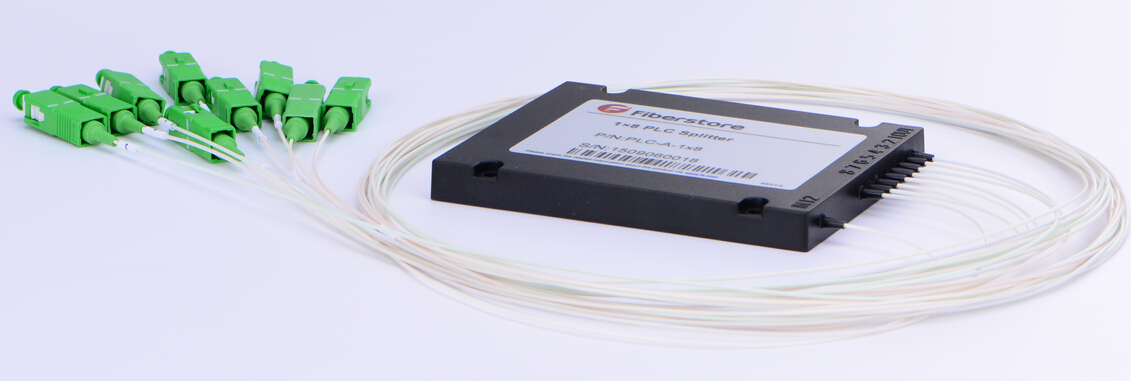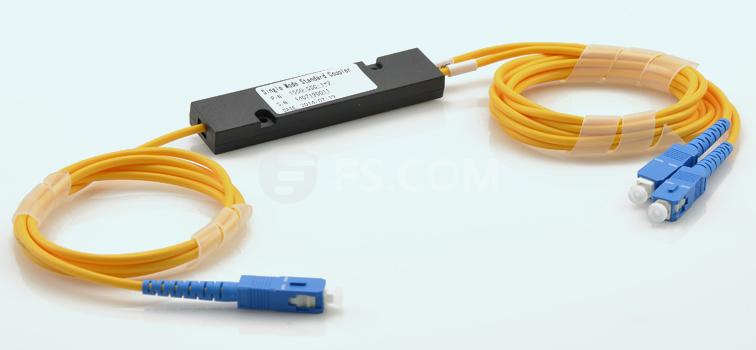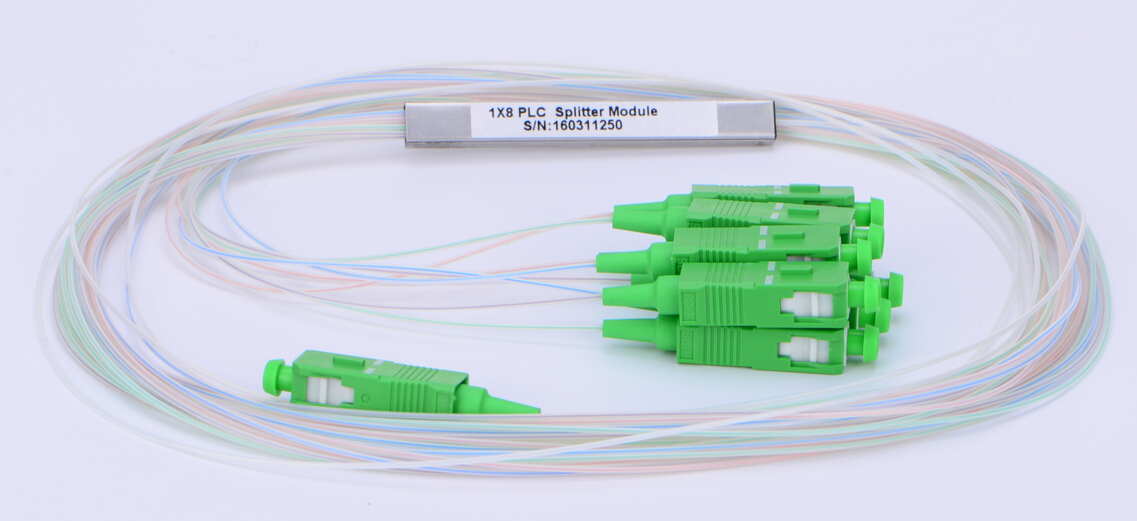Fiber optic splitters play an increasingly significant role in many of today’s optical network topologies. They provide capabilities that help users maximize the functionality of optical network circuits from FTTx systems to traditional optical networks. And usually they are placed in the central office or in one of the distribution points (outdoor or indoor). This article will talk about two types of optical splitters (PLC splitter and FBT splitter) and then have a comparison between them. FBT splitters vs. PLC splitters: what are the differences?
A fiber optic splitter is a passive optical device that can split or separate an incident light beam into two or more light beams. These beams may or may not have the same optical power as the original beam, based on the configuration of the splitter. By means of construction, the outputs of a optical splitter can have varying degrees of throughput, which is highly beneficial when designing optical networks, whether the optical splitter is used for network monitoring or for a loss budget in a passive optical network (PON) architecture. Generally, there are two types of fiber optic splitters, which are FBT splitters and PLC splitters.

FBT (fused biconical taper) is the traditional technology in which two fibers are placed closely together, typically twisted around each other and fused together by applying heat while the assembly is being elongated and tapered. A signal source controls the desired coupling ratio. The fused fibers are protected by a glass substrate and then protected by a stainless steel tube, typically 3 mm diameter by 54 mm long. FBT splitters are widely accepted and used in passive optical networks. The following picture shows a 1×2 FBT splitter single-mode three window fiber splitter with ABS box.

The PLC splitters are used to separate or combine optical signals. A PLC (planar lightwave circuit) is a micro-optical component based on planar lightwave circuit technology and provides a low cost light distribution solution with small form factor and high reliability. PLCs are manufactured using silica glass waveguide circuits that are aligned with a v-groove fiber array chip that uses ribbon fiber. Once everything is aligned and bonded, it is then packaged inside a miniature housing. PLC splitters have high quality performance, such as low insertion loss, low PDL, high return loss, etc. The following is a picture of 1×8 blockless PLC splitter.

The differences between FBT splitters and PLC splitters are described in the following table.

In a word, the FBT splitters have lower costs but restricted to the operating wavelength, and the maximum insertion loss will vary depending on the split and increase substantially for those splits over 1:8. While the PLC splitters, with higher costs, have equal splitter ratios for all branches as well as low failure rate.
As a leading supplier in fiber optic communication industry, FS.COM provides various kinds of PLC splitters and FBT splitters. Moreover, our fiber optic splitter quality and performance is not only guaranteed by using high-quality components and stringent manufacturing processes and equipment, but also by adherence to a successful quality assurance program, which can be checked in “FS.COM Quality Assurance Program for PLC Splitter”. For more details, you can visit www.fs.com.